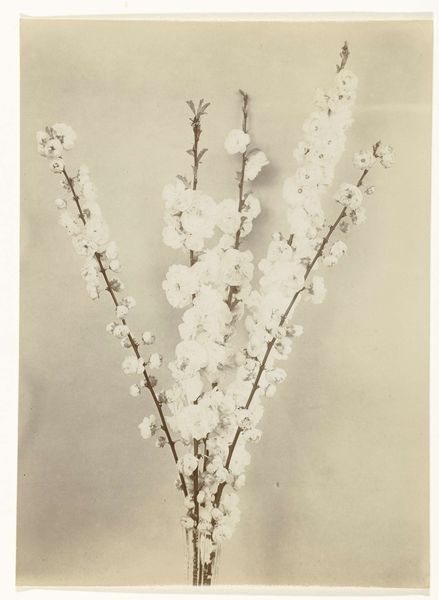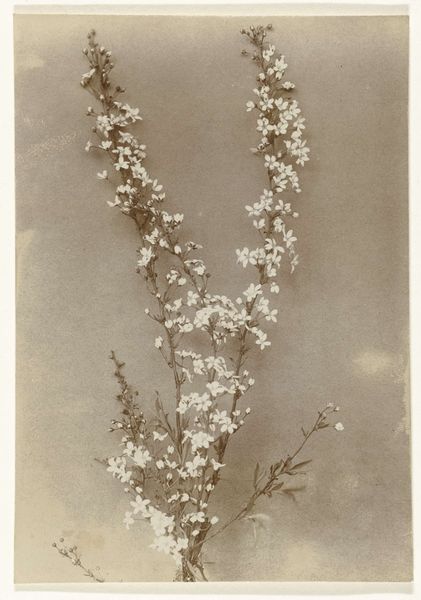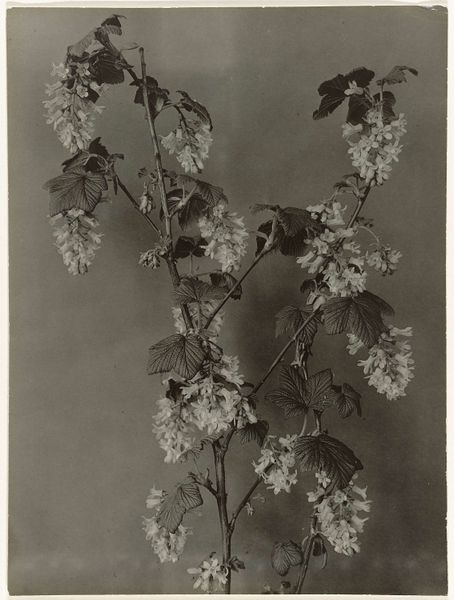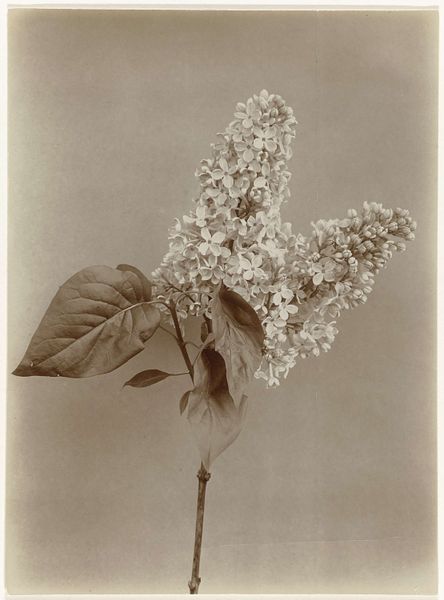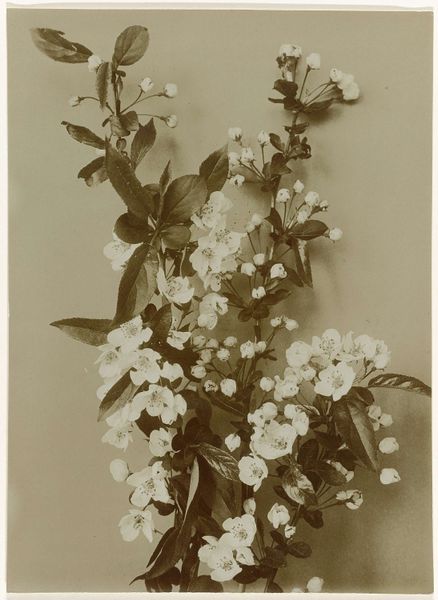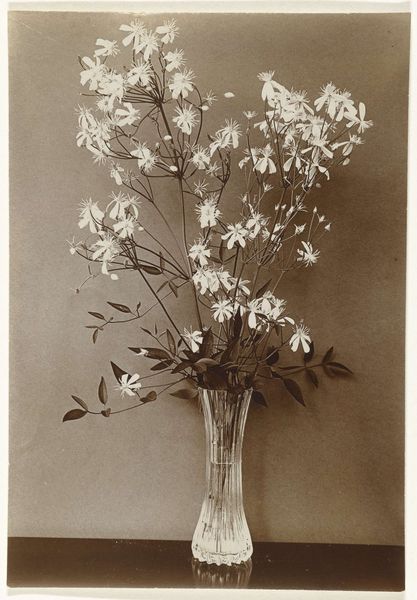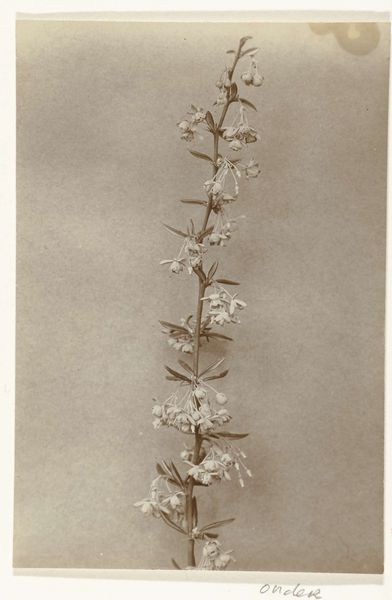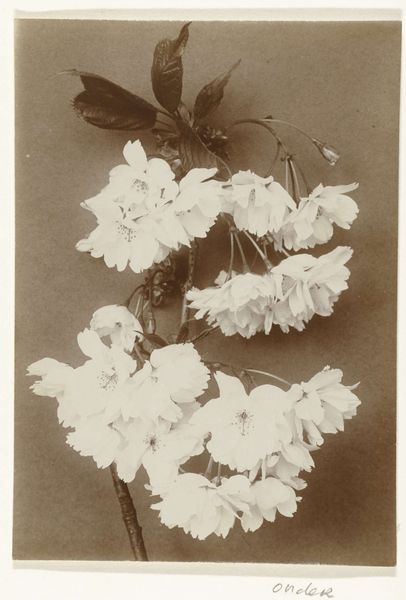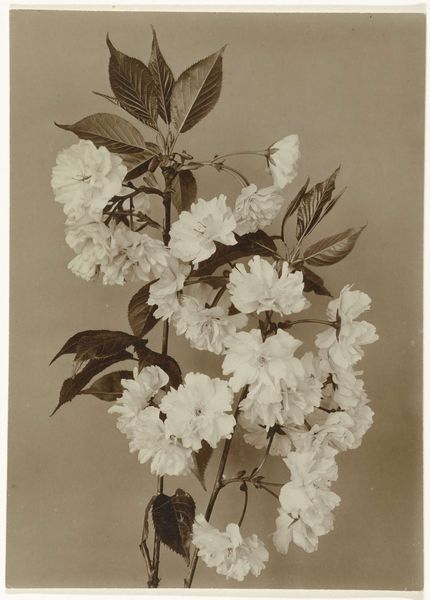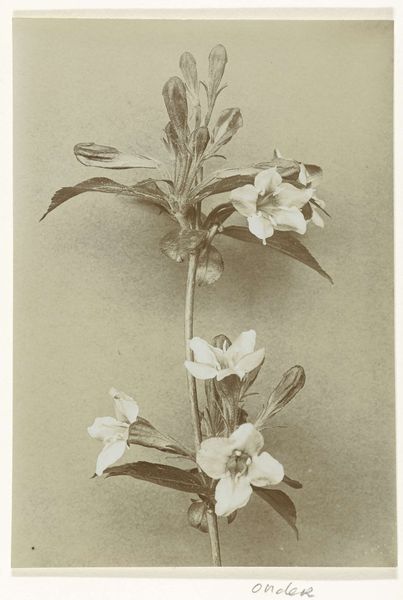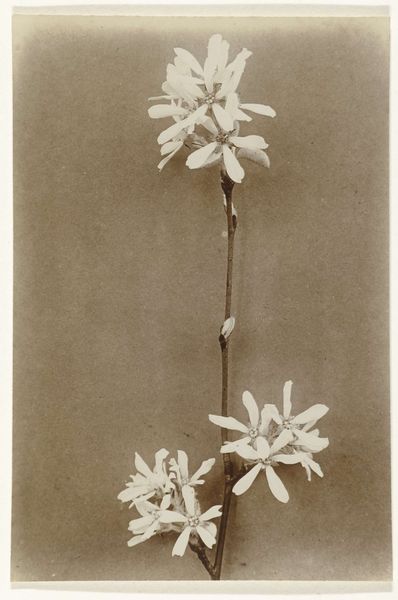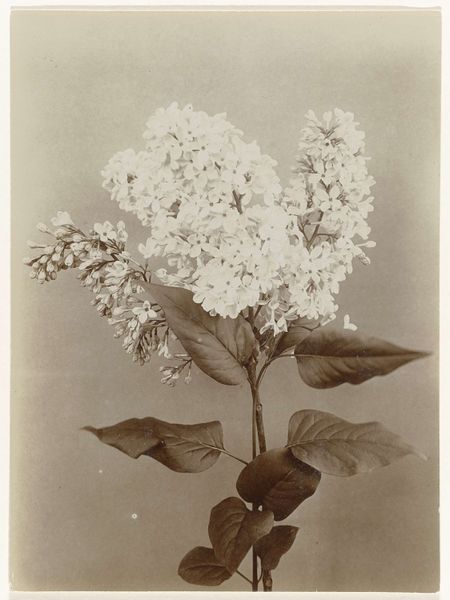
print, photography
# print
#
photography
#
botanical photography
#
botanical art
Dimensions: height 223 mm, width 166 mm
Copyright: Rijks Museum: Open Domain
Editor: Here we have Richard Tepe's "Bloeiende takken van een treurkers," a photographic print from around 1900 to 1930. I'm struck by its delicate and almost melancholic mood, created by the soft sepia tones and the slightly drooping branches. How do you interpret the cultural significance of botanical photography like this from that period? Curator: I see this work as deeply embedded in the intersection of art, science, and the social norms of the early 20th century. Think about it: photography was still relatively new, offering a way to document and classify the natural world. But beyond simple documentation, botanical photography, like Tepe's, can be seen as a reflection of the era's obsession with order and control. How does the artist frame nature, and who had access to such imagery? What kind of control are we imposing? Editor: That's interesting, I hadn't considered the power dynamics at play. So, the act of photographing these branches isn’t just about capturing beauty; it's about claiming some sort of...ownership? Curator: Precisely. Consider the gendered aspects, too. At this time, the domestic sphere and nature were closely linked with femininity. How does this connect to the rising prominence of women in photography, often focusing on domestic subjects or nature? It invites us to look beyond the immediate aesthetics and reflect on gender roles of the time. Do you see elements of control or maybe celebration, in the rendering? Editor: Now that you point it out, there's a deliberate framing that feels less about wild, uncontrolled growth, and more about a curated selection of nature. It's thought-provoking how even a seemingly innocent image like this can reveal so much about societal values and gender expectations of the period. Curator: Exactly. And by exploring those underlying currents, we are better able to have discussions on our contemporary relationship with gender and nature. The act of re-examining history fosters awareness about our ever changing social landscape, informing present struggles. Editor: This conversation really widened my view. It's no longer just a pretty photograph; it's a historical document ripe with social and political meaning! Curator: Indeed, it exemplifies how deeply intertwined art is with the fabric of culture and historical progress, which can allow us a critical approach to contemporary art practices.
Comments
No comments
Be the first to comment and join the conversation on the ultimate creative platform.
